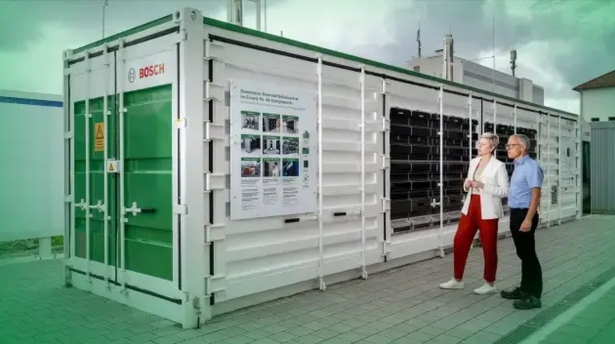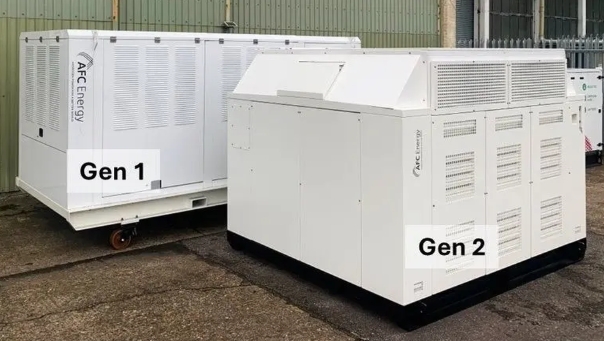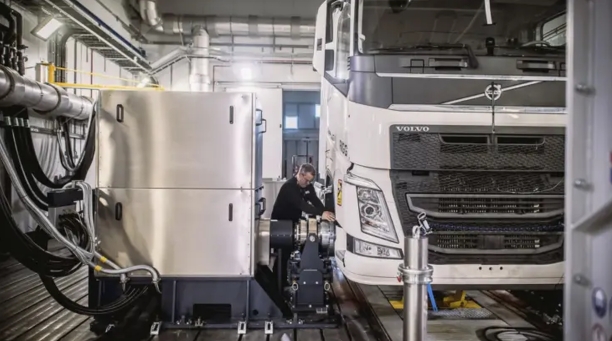Construction work at the Ostrovets plant (Image: ASE)
The two-unit Ostrovets plant is being built using the Russian VVER-1200 AES-2006 design. Both units are scheduled for commissioning by next year, providing 2340 MWe of net capacity.
A Pre-Operational Safety Review Team (Pre-OSART) today concluded an 18-day mission to assess operational safety at the Ostrovets plant, about 150km northwest of Minsk. The 15-member team comprised experts from Armenia, Belgium, Brazil, France, the Netherlands, Russia, Slovak Republic and the USA, as well as IAEA officials.
Pre-OSART missions aim to improve operational safety by objectively assessing safety performance using the IAEA's Safety Standards and proposing recommendations for improvement where appropriate. The IAEA says such reviews are "not a regulatory inspection, nor is it a design review or a substitute for an exhaustive assessment of the plant's overall safety status".
The review covered the areas of leadership and management for safety; training and qualification; operations; maintenance; technical support; operating experience; radiation protection; chemistry; emergency preparedness and response; accident management; and commissioning.
The Pre-OSART mission team identified a number of good practices at Ostrovets that will be shared with the nuclear industry globally. These include a reliable alarm system that not only sounds the alarm but can also be used by the plant to give verbal information and instructions to the population in case of radiological or other emergencies. The plant has also provided its fire department with an emergency shelter providing the same level of radiological protection as that used for plant personnel. In addition, the main control rooms is fitted with an integrated display panel for the management and control of mobile equipment necessary during emergencies.
The mission made several recommendations to improve operational safety at Ostrovets, including ensuring that all activities related to development and implementation of operational programmes are properly implemented. The plant management should also enhance monitoring and supervision of the commissioning programme, as well as implementing an operating experience feedback programme to ensure lessons from internal and external operating experiences are acted upon.
Team leader Yury Martynenko, senior nuclear safety officer in the IAEA's Operational Safety Section, said: "Constructing a large, modern nuclear power plant designed for 60 years of operation requires senior plant leaders to adopt a sustained commitment to nuclear safety throughout the installation's lifetime. The Pre-OSART team has observed a commitment by plant management to assure safe and reliable operation. The team has also offered recommendations for further strengthening safety and for timely implementation of operational programmes."
The mission team has submitted a draft report of its finding to the plant management. The management, together with the national regulator, will be able to comment on the report, a final version of which will be submitted to the Belarusian government within three months.
Follow-up missions are standard components of the OSART programme and are typically conducted within two years of the initial mission. Ostrovets plant management said it would address the areas identified for improvements by the Pre-OSART and requested a follow-up OSART mission in about 18 months.
Belarusian NPP Chief Engineer Anatoly Bondar said, "The Pre-OSART mission is a great opportunity to get top international experts to provide an independent review to help enhance operational safety ahead of the planned start of the new reactor. The development areas of this OSART assessment will be taken into account as part of our principle of continuous improvement."
In October 2018, an IAEA team of experts concluded a 10-day mission to review Belarus's preparedness and response arrangements for nuclear and radiological emergencies. An Emergency Preparedness Review is another peer review offered by the IAEA to strengthen nuclear safety in Member States.







